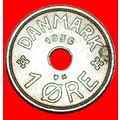Wellington, Somerset - general view - postcard by EJ Teare c.1970s
- Condition : Used
- Dispatch : 2 Days
- Brand : None
- ID# : 183654631
- Quantity : 1 item
- Views : 125
- Location : United Kingdom

- Seller : justthebook (+1704)
- Barcode : None
- Start : Sat 27 Jul 2019 14:13:07 (BST)
- Close : Run Until Sold
- Remain : Run Until Sold
More Listings from This Seller view all
Seller's Description
- Postcard
- Picture / Image: Wellington, Somerset [general view from distance]
- Publisher: E.J. Teare - c.1960s or 1970s
- Postally used: no
- Stamp: n/a
- Postmark(s): n/a
- Sent to: n/a
- Notes / condition:
Please ask if you need any other information and I will do the best I can to answer.
Image may be low res for illustrative purposes - if you need a higher definition image then please contact me and I may be able to send one. No cards have been trimmed (unless stated).
------------------------------------------------
Postage & Packing:
Postage and packing charge should be showing for your location (contact if not sure).
No additional charges for more than one postcard. You can buy as many postcards from me as you like and you will just pay the fee above once. Please wait for combined invoice. (If buying postcards with other things such as books, please contact or wait for invoice before paying).
Payment Methods:
UK - PayPal, Cheque (from UK bank) or postal order
Outside UK: PayPal ONLY (unless otherwise stated) please. NO non-UK currency checks or money orders (sorry).
NOTE: All postcards are sent in brand new stiffened envelopes which I have bought for the task. These are specially made to protect postcards and you may be able to re-use them. In addition there are other costs to sending so the above charge is not just for the stamp!
I will give a full refund if you are not fully satisfied with the postcard.
----------------------------------------------
Text from the free encyclopedia WIKIPEDIA may appear below to give a little background information (internal links may not work) :
*************
Wellington is a small market town in rural Somerset, a county in the west of England, situated 7 miles (11 km) south west of Taunton in the Taunton Deane district, near the border with Devon, which runs along the Blackdown Hills to the south of the town. The town has a population of 14,549, which includes the residents of the parish of Wellington Without,[1] and the villages of Tone and Tonedale.
Known as Weolingtun in the Anglo-Saxon period, its name had changed to Walintone by the time of the Domesday Book of 1086. Wellington became a town under a royal charter of 1215 and during the Middle Ages it grew as a centre for trade on the road from Bristol to Exeter. Major rebuilding took place following a fire in the town in 1731, after which it became a centre for cloth-making. Wellington gave its name to the first Duke of Wellington, Arthur Wellesley, who is commemorated by the nearby Wellington Monument.
Following his victory at the Battle of Talavera in the Peninsular War, Arthur Wellesley was offered a peerage. The question was what title should he take. His brother, Richard Wellesley, Earl of Mornington, looked around and discovered that a manor in the parish of Wellington was available. It was also reasonably close to the family name. Because Arthur was still in Spain in command of the army fighting the French, Richard oversaw the purchase. By this process Arthur therefore became Marquess of Wellington. According to the book Wellington as Military Commander by Michael Glover (ISBN 7221 3903 9), Arthur Wellesley first signed himself 'Wellington' on 16 September 1809. At the Battle of Waterloo in 1815, Arthur Wellesley was already further elevated to the peerage rank of the Duke of Wellington. At the time he became Ambassador to France, The London Gazette of 4 June 1814 refers to him as having that title but suggests that it was granted by warrant on 25th August, 1812.
The Grand Western Canal reached the town in 1835 and then the Bristol and Exeter Railway in 1843. The town's own railway station survived until 1964. Wellington was home of Fox, Fowler and Company, which was the last commercial bank permitted to print their own sterling banknotes in England and Wales. In the 20th century closer links with Taunton meant that many of the residents of Wellington commuted there for work, and the M5 motorway enabled car journeys to be made more easily.
Local industries, which now include an aerosol factory and bed manufacturers, are celebrated at the Wellington Museum in Fore street. Wellington is home to the independent Wellington School, and state-funded Court Fields School. It is also home to a range of cultural, sporting and religious sites including the 15th century Church of St John the Baptist.
The capital city of New Zealand is named after Arthur Wellesley, 1st Duke of Wellington, being recognised as having some influence in the company that founded the New Zealand town. The New Zealand capital therefore takes its name ultimately from the English town of Wellington in Somerset.
In a grant of between 899 and 909, Edward the Elder, gave the land then known as Weolingtun, which means "wealthy estate",[2] along with West Buckland and Bishops Lydeard to Bishop Asser. This was in exchange for the monastery of Plympton in Devon.[3] An alternative explanation for the origin of the name is “the settlement in the temple clearing”.[4] By the time of the Domesday Book of 1086, the name had changed to Walintone,[3] and the estate was owned by Gisa (Bishop of Wells).[4] The parish of Wellington was part of the Kilmersdon Hundred,[5]
A site at Longforth Farm near Tonedale has been identified as having Bronze Age occupation and, during excavations prior to the building of new homes, found to have been occupied by a 12th-14th century building with decorated floor tiles covering 0.4 hectares (0.99 acres).[6][7][8]
A royal charter of 1215 gave Wellington its status as a town, and during the medieval period it grew as a centre for trade on the road from Bristol to Exeter, being laid out, with the church at the east end of town, in a similar manner to other towns of this era.[4] In 1548, the manor was sold to Edward Seymour, 1st Duke of Somerset, but reverted to the control of the bishops after his execution. By the end of the 16th century it had come under the protection of John Popham (judge) and his descendants who built a manor house which was destroyed during the English Civil War.[4]
Major rebuilding took place in the town following a fire in 1731.[9] After this the town's importance grew as it became a centre for clothmaking across Somerset and Devon, its importance as trade centre enhanced by fires in Taunton and Tiverton.[4] By the 1831 census, 258 people were recorded as cloth workers in Wellington.[10]
Arthur Wellesley took the title of his Marquessate in 1809 from this town of Wellington. Nearby Wellington Hill boasts a large, spotlit obelisk to his honour, the Wellington Monument. The Wellington Monument is a floodlit 175 feet (53 m) high triangular tower designated by English Heritage as a grade II* listed building.[11] It was erected to celebrate the Duke of Wellington's victory at the Battle of Waterloo. The foundation stone was laid in 1817, on land belonging to the Duke, but, owing to funding problems, the monument was not completed until 1854. It is now owned by the National Trust, who announced plans to reclad the monument at a cost of £4 million in 2009.[12]
In the 18th century turnpikes arrived in the area and then in the 19th communications improved with the building of the Grand Western Canal, which reached the town in 1835, and then the Bristol and Exeter Railway.[4] Wellington station was opened when the line reached the town on 1 May 1843. It was a typical Brunel design but was rebuilt in 1932 when two loop lines were put in. This entailed the platforms being moved back to accommodate the widened lines. These platforms are clearly visible and a goods shed still stands on the east side of the line at the Taunton end of the station, although the station closed on 5 October 1964. Wellington was an important station as it stood at the foot of a steep incline. Banking locomotives were kept here, ready to assist heavy westbound trains up to Whiteball Tunnel.
In the 20th century closer links with Taunton meant that many of the residents of Wellington commuted there for work, and the M5 motorway, which opened in sections in the 1960s and 1970s,[13] enabled car journeys to be made more easily.[4]
Listing Information
| Listing Type | Gallery Listing |
| Listing ID# | 183654631 |
| Start Time | Sat 27 Jul 2019 14:13:07 (BST) |
| Close Time | Run Until Sold |
| Starting Bid | Fixed Price (no bidding) |
| Item Condition | Used |
| Bids | 0 |
| Views | 125 |
| Dispatch Time | 2 Days |
| Quantity | 1 |
| Location | United Kingdom |
| Auto Extend | No |




 for 1 item(s)
for 1 item(s)















